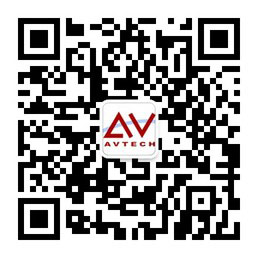Salesforce开发培训
Course Description:
This comprehensive hands-on course is a must for new application developers who want to create custom Force.com applications or customize existing Salesforce applications. Participants will learn how to use the declarative “clicks not code” capabilities of the Force.com cloud platform to create new applications and Force.com pages (Visualforce) and components to create custom interfaces.
Who should take this course?
Building Applications with Force.com is designed for application developers who want an in-depth understanding of how to use the declarative capabilities of the Force.com platform to create custom applications and Force.com pages to create custom interfaces. This course provides the foundation for developers who need to know how to leverage these capabilities for rapid development and to prepare for learning Force.com code (Apex) and Force.com page controllers.
Prerequisites
The prerequisites include a solid understanding of basic Salesforce concepts and functionality and completion of the following online courses, which are available at www.salesforce.com or, for salesforce.com customers, right from the Help site in Salesforce:
Getting Started: Navigating Salesforce
Getting Started: Using the Sales Cloud
• No previous computer programming training/skills required, but experience with at least one programming language is preferred
• General understanding database design and web development
• General understanding Windows operating system and web user interface
What you will learn
When you complete this course, you’ll be able to:
Build and customize multi-user cloud applications with just clicks
Define an application’s data model
Customize the user interface
Create advanced workflows and validation rules
Automate business processes
Manage your data
Develop a custom user interface with Force.com pages
Students will expect 50% of Lectures and 50% of LAB. The lectures will emphasis a CLEAR understanding of Salesforce.com Force.com technology. The LABS will train hands-on skills for Salesforce.com Force.com configuration and development.
Successful completion of this course will help students to master key Salesforce.com technology concepts and hands-on skills. It will also help students to prepare the Salesforce.com Force.com Certificated Developer (DEV401) Exam.
Text Book
Development with the Force.com Platform: Building Business Applications in the Cloud (3rd Edition) (Developer's Library) by Jason Ouellette
Force.com Developer Certification Handbook by by Siddhesh Kabe
Duration
40hours ( totally 8 weeks)
最新时间:定制课程(内训),人满开班(公开课)
课程大纲:
Lecture 1
Introduction to Force.com
This training introduces you to the Force.com platform features and functionality.
Building Your Data Model
Learn how to create custom objects, custom fields and custom relationships.
Lecture 2
Building Your User Interface
See how to modify the user interface with page layouts, custom applications and custom tabs.
Introducing Business Logic
This module introduces basic business logic functionality. Students will see how to create workflow, validation rules and formula fields.
Lecture 3
Controlling Access to Records
Examine different ways in which users receive access to records: through ownership, organization wide defaults, roles and sharing rules.
Managing Your Users' Experience
Learn how to set up users with appropriate permissions. See how licenses and profiles dictate a user's access to an application.
Lecture 4
Designing Data Access Security
This module provides a summary of security and access features. Through a number of business scenarios, students will have the opportunity to apply the knowledge that they have gained about determining user access.
Implementing Business Processes
The exercise guide includes instructions that will help you to complete the exercises in this course.
Preserving Data Quality
Explore a number of different implementations of validation rules to enforce conditionally required fields, data format and data consistency as well as validation rules to prevent data loss.
Lecture 5
Automating Business Processes with Workflow
Learn how workflow rules can be used to create automated processes. Take a look at the actions that can be triggered by workflow rules. Look at how to automate processes using an immediate action workflow rule and a time-based workflow rule. Additionally, see how to monitor time-based workflow queues.
Automating Business Processes with Approval Processes
Learn about approval processes. Take a look at approval processes with multiple steps, multiple approvers, and processes that skip steps.
Lecture 6
Increasing Data Quality Using Visual Workflow
Learn how to build flows that guide users through the a process utilizing Visual Workflow.
Auditing Processes
Review the tools and methods for auditing changes to both the configuration of and the data in Salesforce.
Data Management Operations
Learn the basics of data management including record IDs, external IDs, and object relationships.
Data Management Tools
Explore which tools are available for moving data into and out of salesforce and understand how to choose the tool that best meets your business requirements.
Lecture 7
Enhancing the User Interface Using Visualforce
Discover what Visualforce is and its features and capabilities. Learn the basics of Visualforce syntax and how Visualforce components are similar to HTML and XML. Learn how to create Visualforce pages and add them into an application.
Additional Uses for Visualforce
Continue to explore using Visualforce pages to change the look and feel of a page, to display Salesforce data on a website using AJAX and JavaScript in conjunction with Visualforce, and to develop Visualforce pages for mobile devices.
Lecture 8
Salesforce.com Force.com Certification Preparation
Report and Analytics (Optional)
Mobile Development (Optional)

